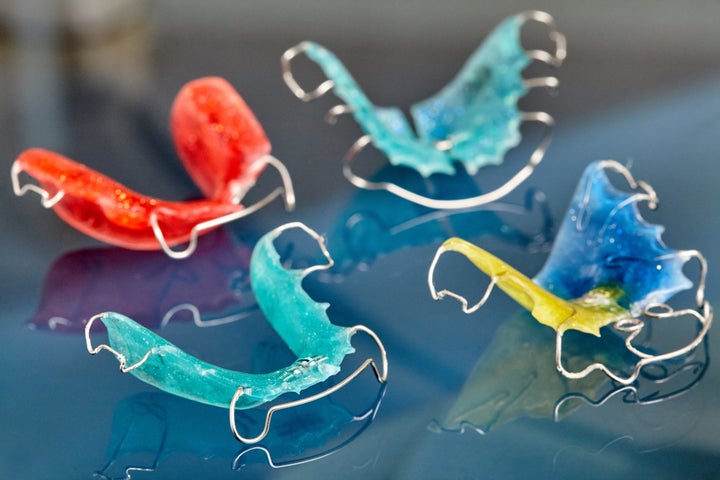Most people who have had braces will need corrective treatment years later, orthodontists have said.
To tackle the problem, experts from the British Orthodontic Society (BOS) advised that retainers, which are used for a period of time after a person has had their braces removed, should actually be “worn for life”.
Simon Littlewood, a consultant orthodontist at St Luke’s Hospital, Bradford, said: “In the past, we used to think that once patients reached a certain age, their teeth would eventually be stable.
“Now we know that’s not true, there is potential for teeth to keep moving throughout life – it’s almost like a normal ageing phenomenon.”

The British Orthodontic Society (BOS) has launched a campaign called ‘Hold that Smile’ to reinforce the message to patients that lifelong retainer wear is the key to maintaining straight teeth.
The campaign is underpinned by an animation aimed at young patients and a short film which communicates the benefits of retainers as well as the risks of teeth moving if the retainers are not worn.
It has been backed by the British Dental Association and the Faculty of General Dental Practice UK (FGDP).
The campaign follows research in the US which found followed up patients who wore retainers for one or two years only and discovered that, a decade later, 70% of people needed treatment to correct movement in their teeth.
Currently, a person may have fixed braces fitted for a period of time. When the brace is removed by an orthodontist, they will be given a retainer.
There are two types of retainers, removable and fixed. The majority of young patients are given removable retainers at the end of their treatment with the instruction to wear them routinely at night. Meanwhile patients who have had complex treatments will often be fitted with fixed retainers.
As a general rule, patients are be asked to wear a removable retainer for a minimum of 12 months, according to BOS.
Dr Mick Horton, Dean of FGDP UK, said: “Many perceive orthodontic treatment as just tooth movement, but without adequate retention evidence shows the occlusion will relapse.
“It is vital that the whole team, including those in primary care, reinforce the message and help ensure that the retention provided maintains the correct tooth position for life.”
Dr Horton said dentists should ensure their patients are made aware that without a long-term retainer, it is likely their teeth will relapse.
Eddie Crouch, vice chair of the British Dental Association, added: “In many cases, orthodontic treatment can be a lengthy process, but once it has concluded it can come as a shock that it may be necessary to wear retainers for life.
“There has been little co-ordinated information for patients on the reasons for this and what they need to do if they break or need to be repaired, and the new campaign by the BOS is a welcome addition to closing this gap.”
Richard George, BOS director of external relations, said: “Hundreds of thousands of young patients in the UK are referred for orthodontic treatment annually. A year after their braces have been removed it falls to them to look after their retainers and to talk to their dentist if there are problems.
“Replacing or repairing retainers is something that the NHS system will expect dentists to charge for. Now that more people in the UK than ever before are benefiting from treatment the message ‘Hold That Smile’ is really important.”